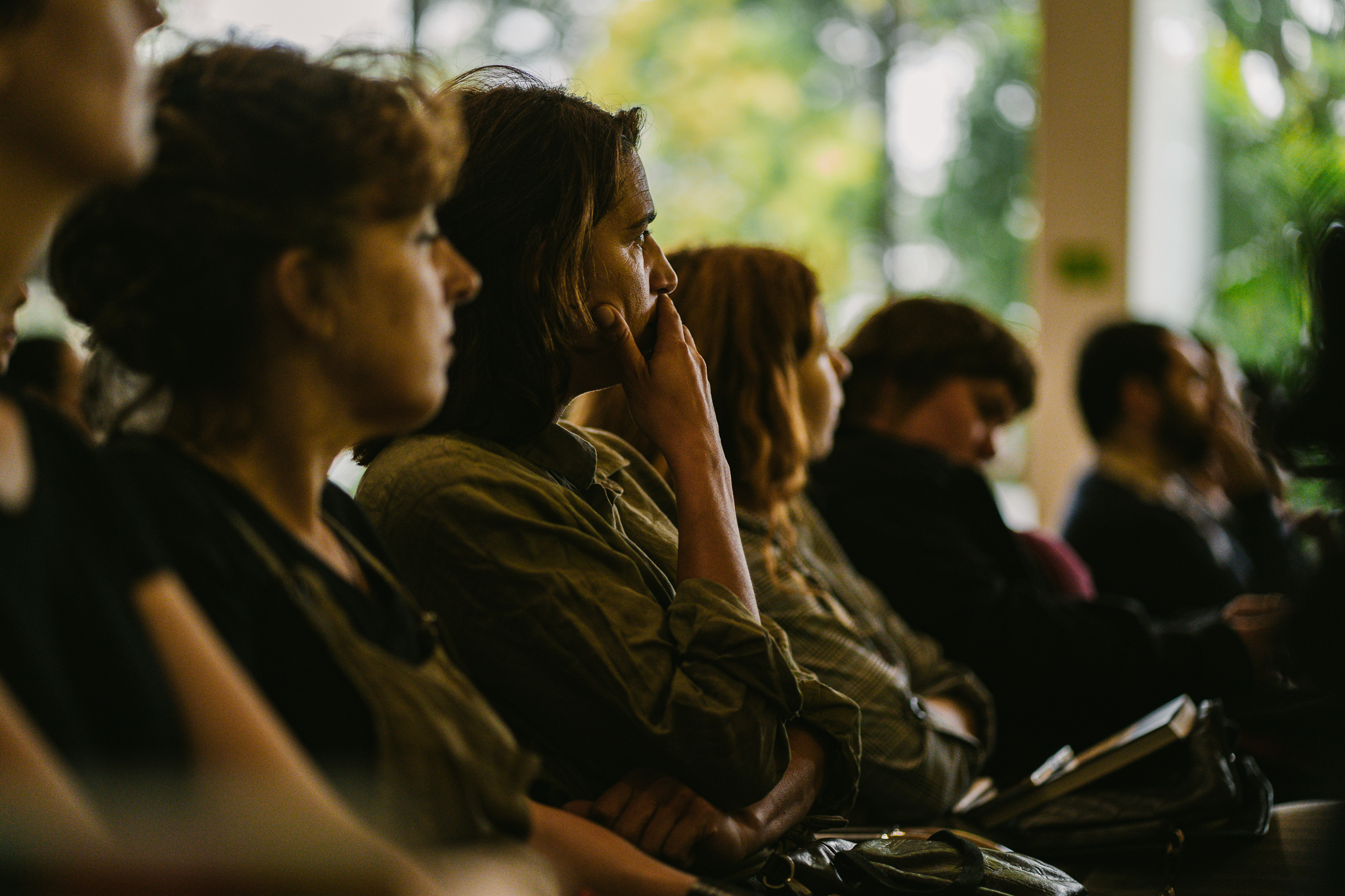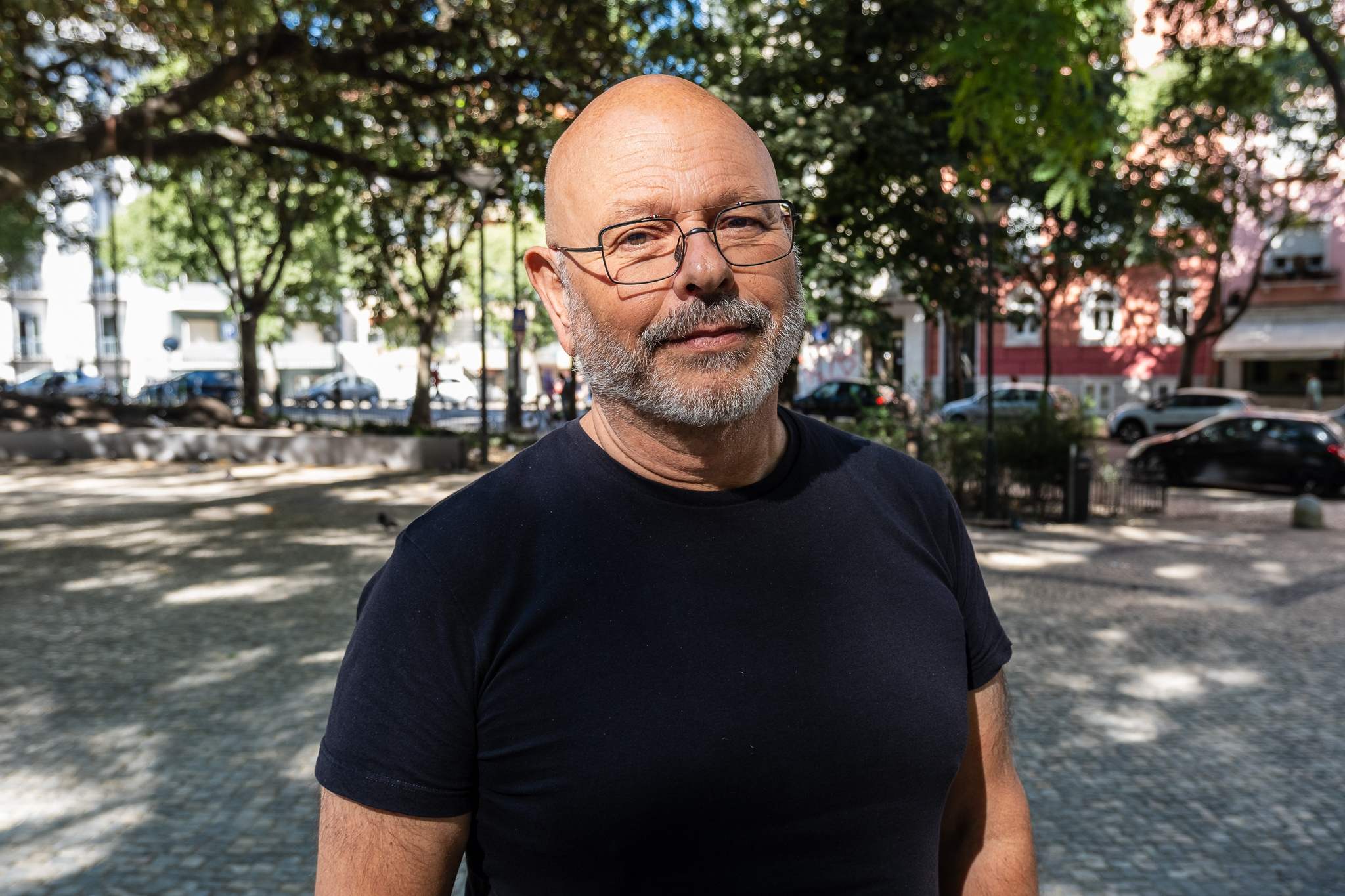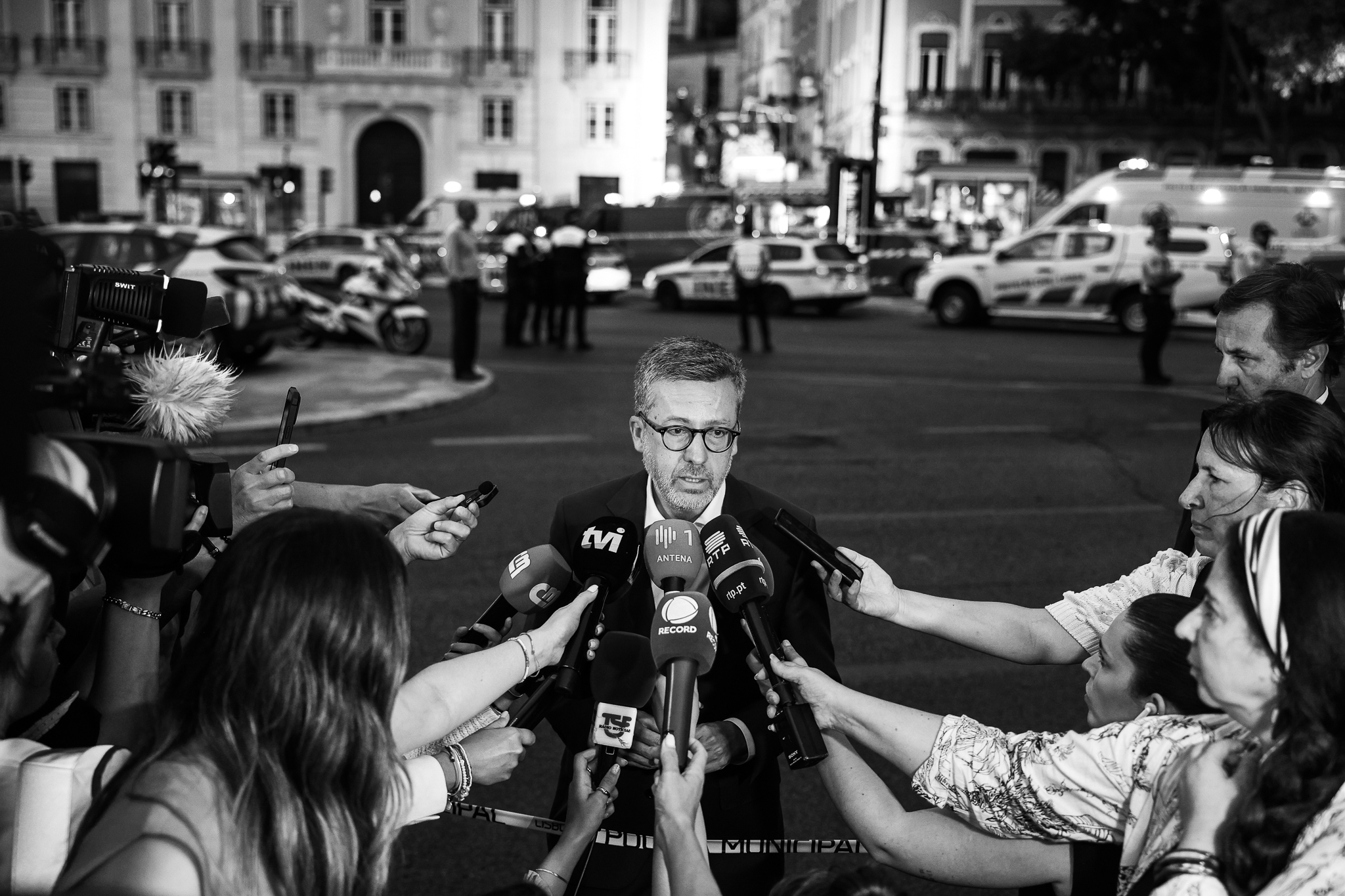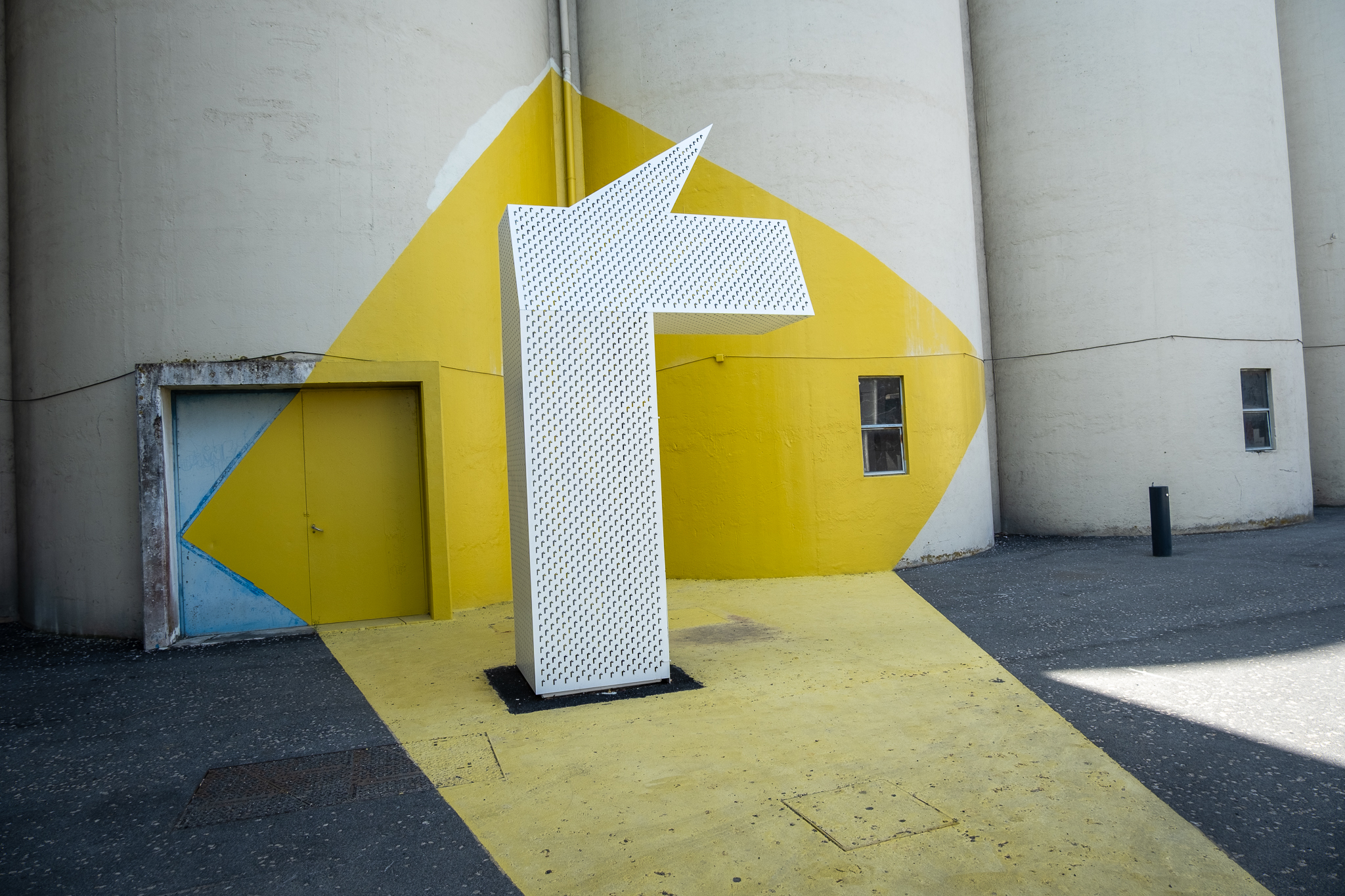To make decisions in a territory, you need data. And Lisbon has since 2017 a record of people who use the bike in the city: who they are, how many there are and how they behave in public space. Will this study be continued?

With pencil or pen in one hand, paper in another, eyes fixed on the bike path - and everything around - Nuno Pinhal and Maria Canellas try to make sure nothing escapes them. That's the way it has to be. They had done it before, and this practice gives them the necessary experience to analyze the high cyclist traffic in the early hours of the day at a complicated intersection like the Avenida da República and Duque d'Ávila bike lanes.
Nuno and Maria are part of a team of several people who, during two to three weeks in October and organized in shifts, were counting cyclists manually. The objective is to follow the evolution of the number of users of soft mobility in the city of Lisbon and also to understand who these people are and how they behave in the public space. This work has been commissioned every year since 2017 by the Lisbon City Council to CERIS, the research unit of the Instituto Superior Técnico for innovation and sustainability in the area of civil engineering, of which researcher Rosa Félix is part. It is a work - from Rosa's perspective - "very important for a municipality's management of cycling mobility"It provides rich and relevant data for policy makers. "The Romans from very early on realized that it was important not only to know the territory, but to know how many there were and who they were, in order to have good governance. Hence the censuses."
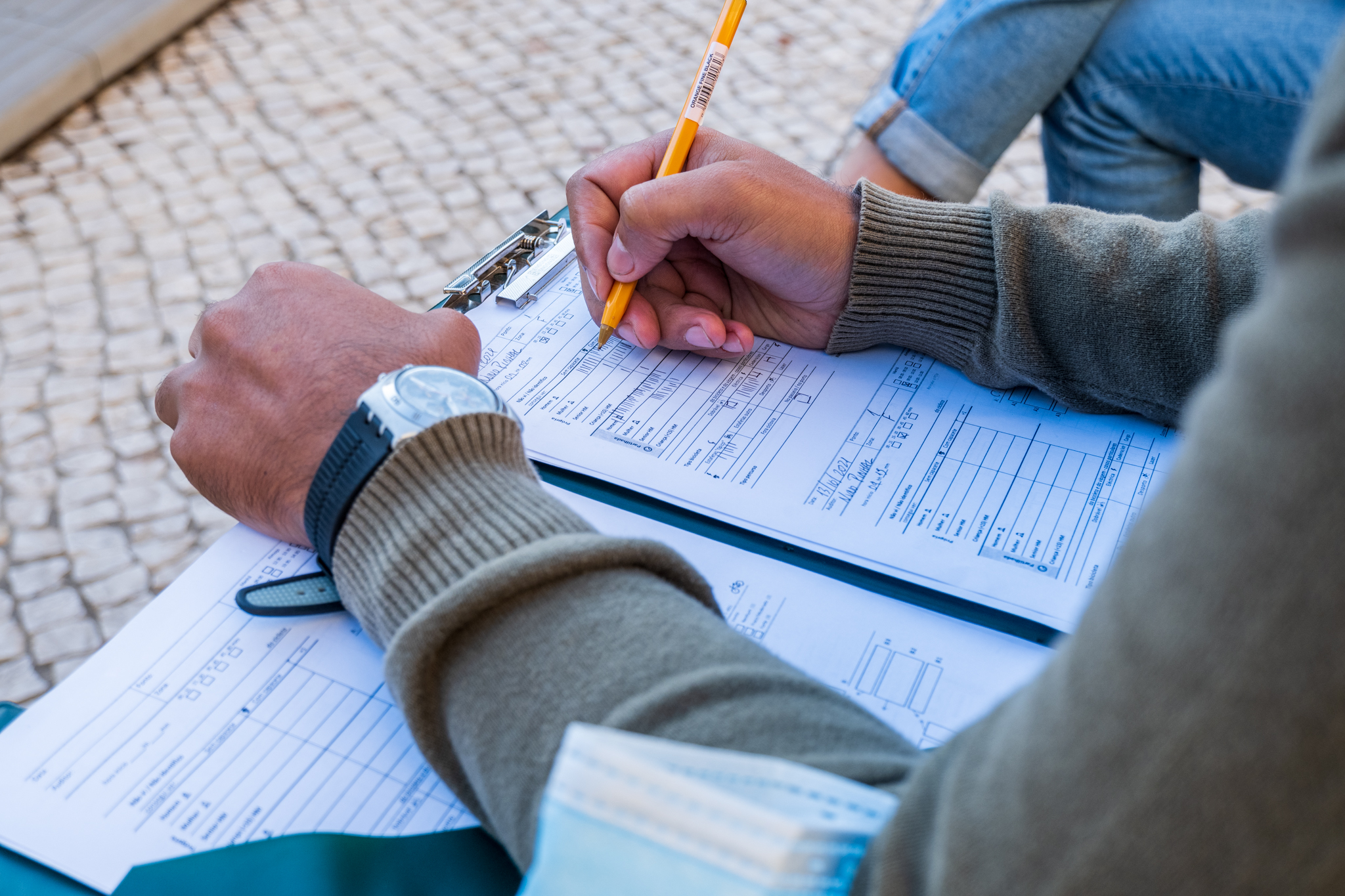
The Scientific Method
Although apparently simple, Nuno and Maria's task is not limited to sitting somewhere while they count those who pass by. To the wear and tear of hours spent with maximum attention is added the need to follow a rigorous scientific process, coordinated by Rosa. "It's something very serious"says. "It's not just going out on the street and counting cyclists. It has a lot of rigor and a lot of science."
Throughout the city 66 observation points were defined, in places where there are bicycle paths - with particular attention to intersections - and in areas where they are planned, which may allow conclusions to be drawn about the need (or not) for cycling infrastructure on a particular artery or, for example, the urgency of reinforcing the safety of a point. This definition of observation points is made together with the City Hall and its cycling network expansion plans.
After the points are located, but before going to the field, there is also fundamental preparation work. You have to find people who are willing to do the counts, between those who have done it in the past and are willing again, and those who, through word of mouth, show interest in doing it for the first time. New "observers" need to be trained, shifts need to be organized, and who gets each of the 66 observation points, on which days of the week and at what times - the less experienced take the less complicated points. You have to make sure that during the weeks of the counts the whole team feels supported and has help when they need it.
The choice of October is not by chance, it is considered a month of stabilized habits, before the more unstable winter. The 66 points are not monitored daily over the two to three weeks. The calendar is set up to allow for redundancy and for consistency from one year to the next; if a certain site was assessed on a certain day of the week the next year the counts will be done on the same day. The counts are done in the morning and afternoon during three-hour periods, segmented into blocks of 15 minutes, with each block corresponding to filling in data on a sheet. There are also lunchtime counts at some points. It's very intensive for those who are doing the counting - it's six hours in total each day; hours that are paid for, Rosa Félix points out. The "observers" are asked to find comfort on a bench or a terrace, as it will be several hours, and to be discreet. "We are not here to make it look like there are more cyclists"He explains that the counts must be done in strict 15-minute blocks, and not one second more just because two more people on bicycles have passed by.
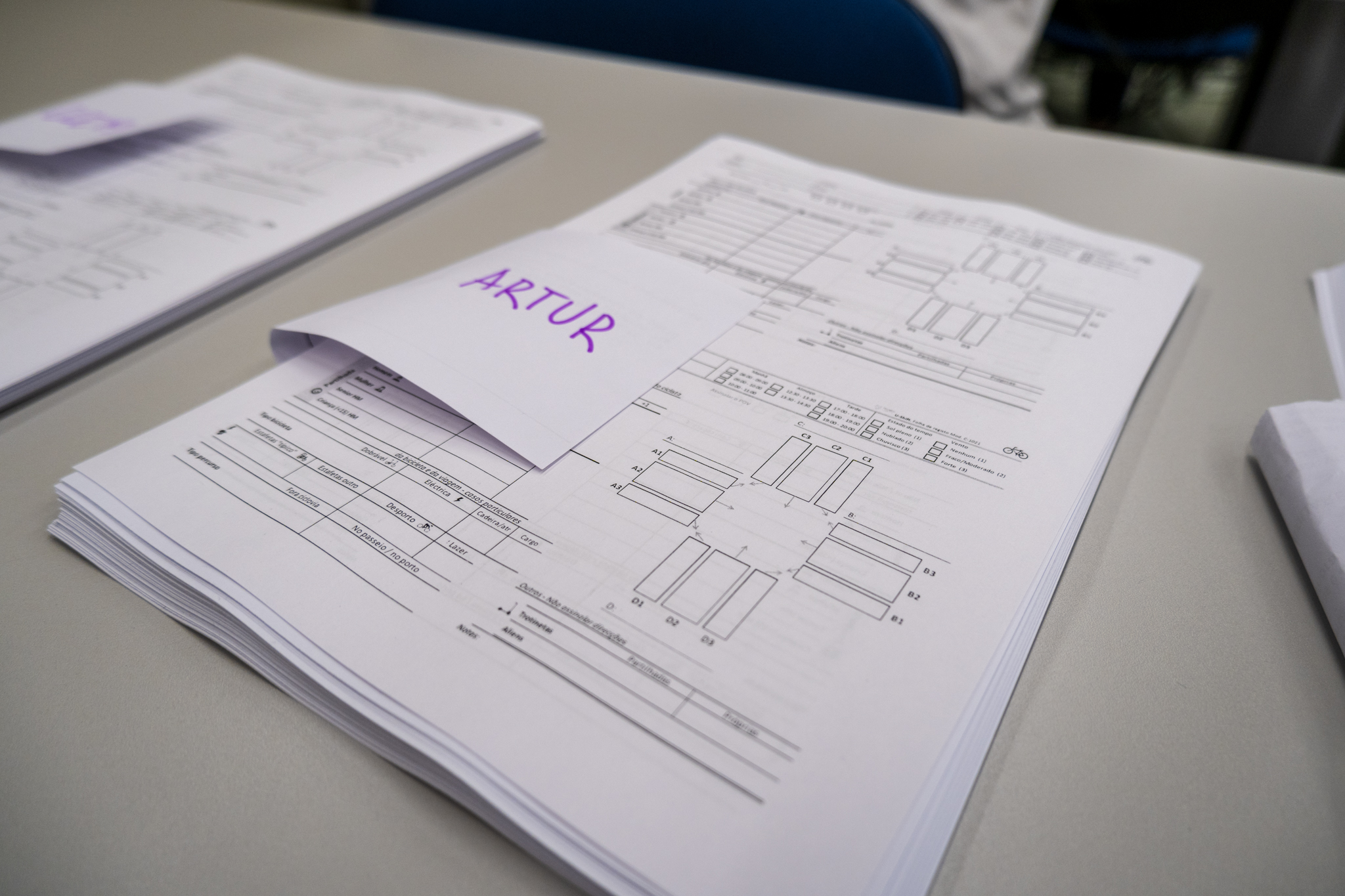
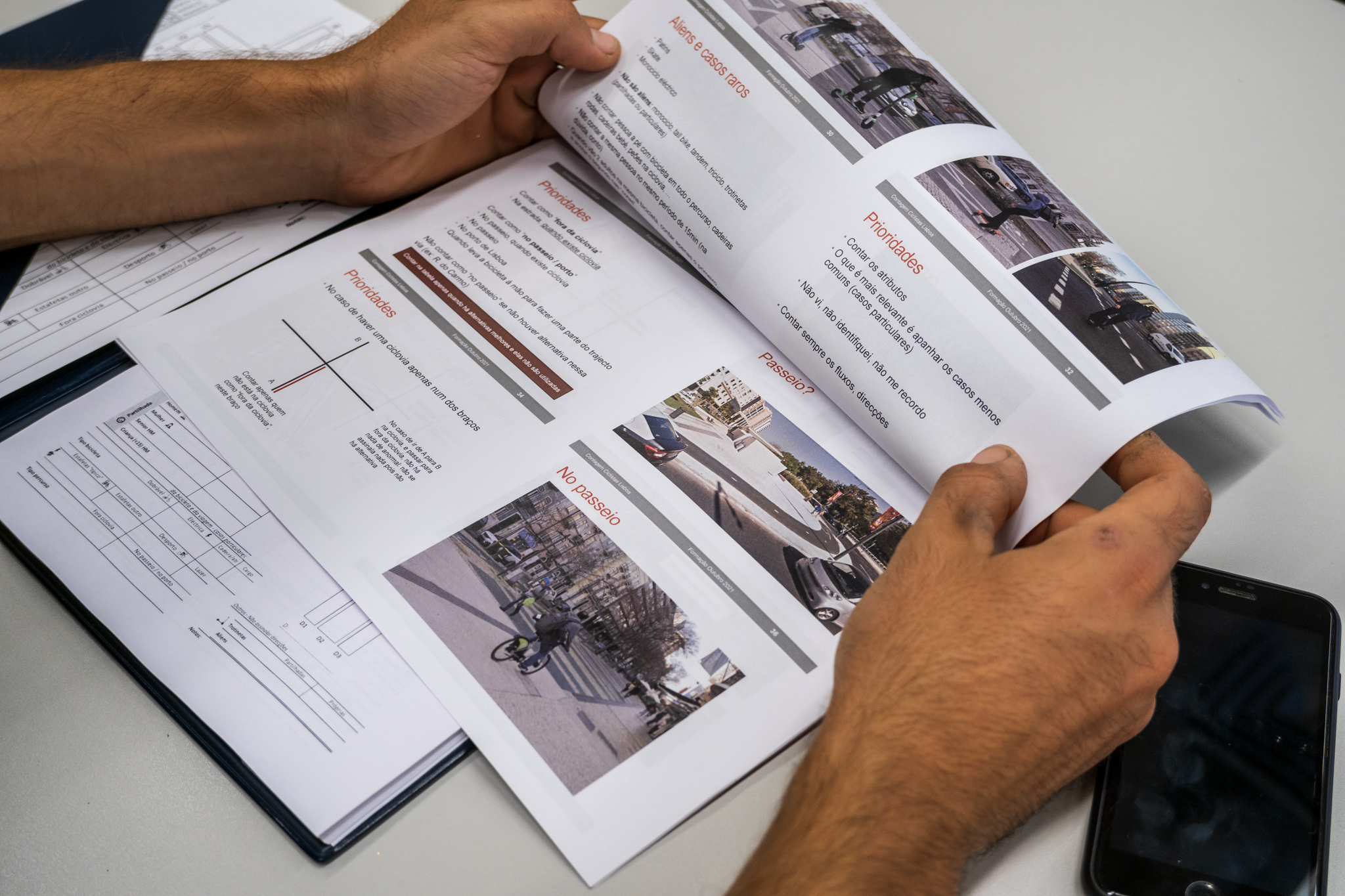
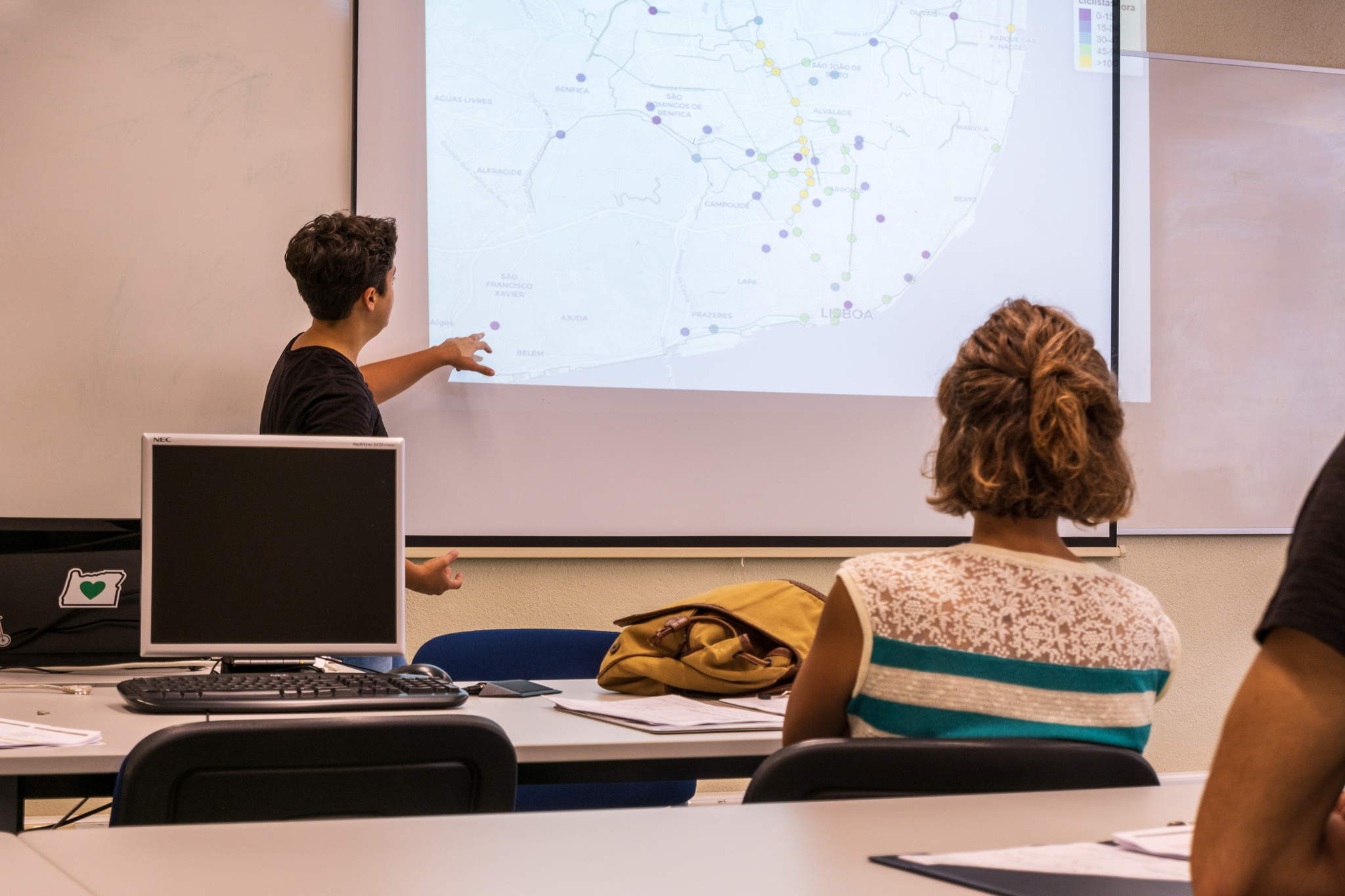
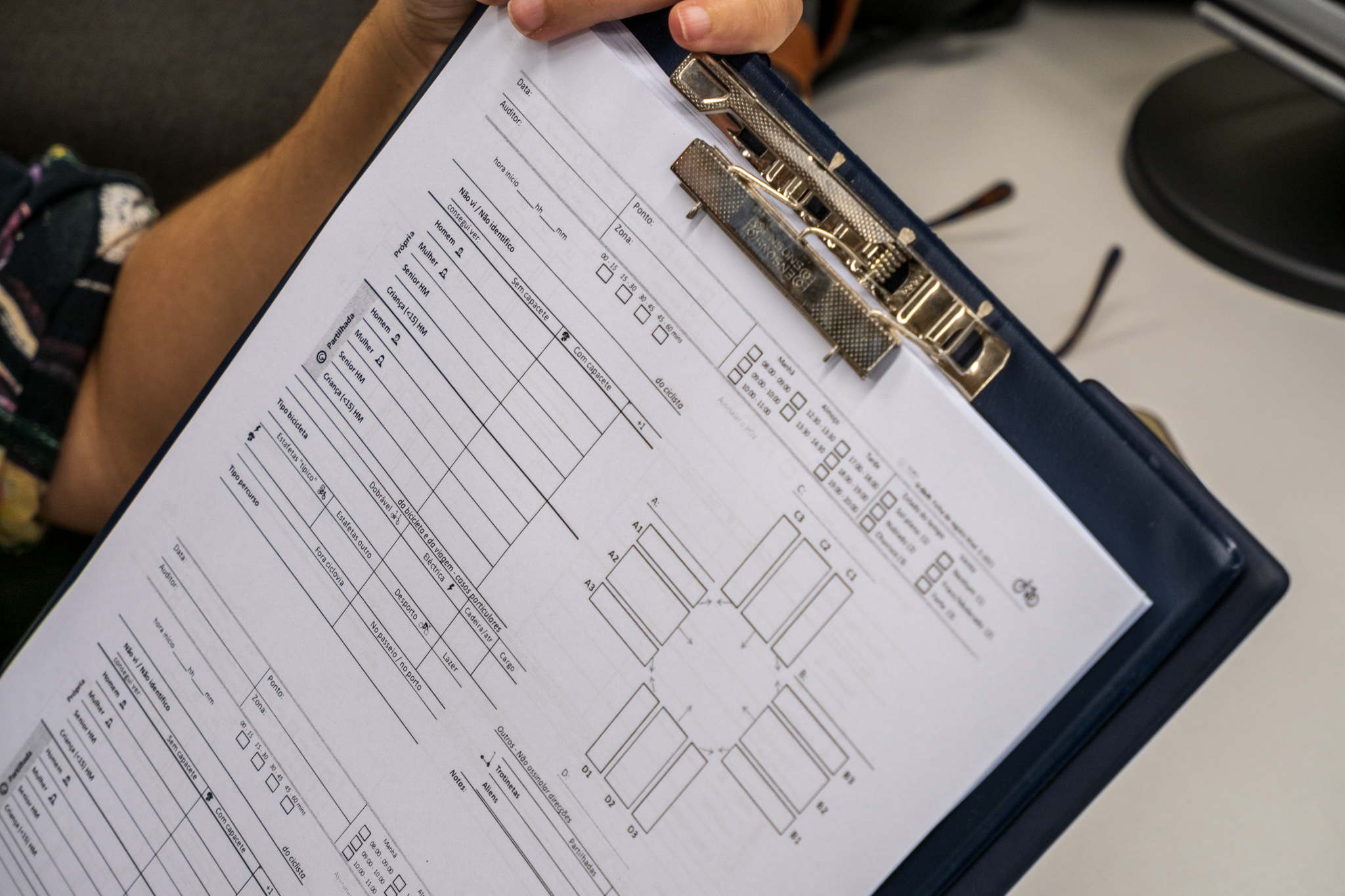
Throughout the working hours, the "observers" carry with them a sheaf of sheets where they note how many people pass by, what route they take - and other characteristics that are possible to gauge, such as gender or age group. If they are relays, they have their own category, since this is a social field that this work also seeks to study. They also note what type of bicycle each cyclist rides - if it is simple, electric, if it has a child seat, if it is a folding bike, if it is a cargo bike, etc. More than knowing how many people pedal, Rosa and her team seek to know how they pedal. And this wealth of information only human eyes can count, says the researcher. Despite the fact that Lisbon has since the summer 34 automatic counters on different bike paths in the city, these "they can't have the sensitivity that a person's eyes have that allows them to register who is that person riding on a bicycle".
The Digitization and the Report
At the end of the counting weeks comes the processing of the data. All counts are marked by hand, and each "observer" must then scan that information into a document shared online. Each "observer" can adopt their own counting strategy, as long as the output is to fill out the sheets in a way that the person him/herself understands and results in the correct data being entered into this shared document, from which the work of cleaning and processing the data begins. The spreadsheet that results from this process is a database with about 2800 entries and 40 variables, on which Rosa and her team will have to work. The data processing, validation and analysis takes about two months, with the final report usually ready by December. It is usually a multi-page document, with graphics, some images, and an in-depth analysis of what is happening in the city, which goes to the mobility department of Lisbon City Hall, where it will be read and approved. Then it can be made public for everyone to consult - it's a document that is usually several pages long. a step that, unfortunately, is not always accomplished.
The latest available count report is May 2021 - since 2020 this work has been done twice a year, with the October counts being the most important and complete. From report to report, there has been a growth in bicycle use in the city; from 2017 to 2020 this increase is estimated to have been 138%. But in October 2021 there was a first: at the intersection of Campo Grande with Cidade Universitária and Avenida do Brasil, a team of four people was needed for the first time to handle a flow of about 400 people per hour at that intersection.
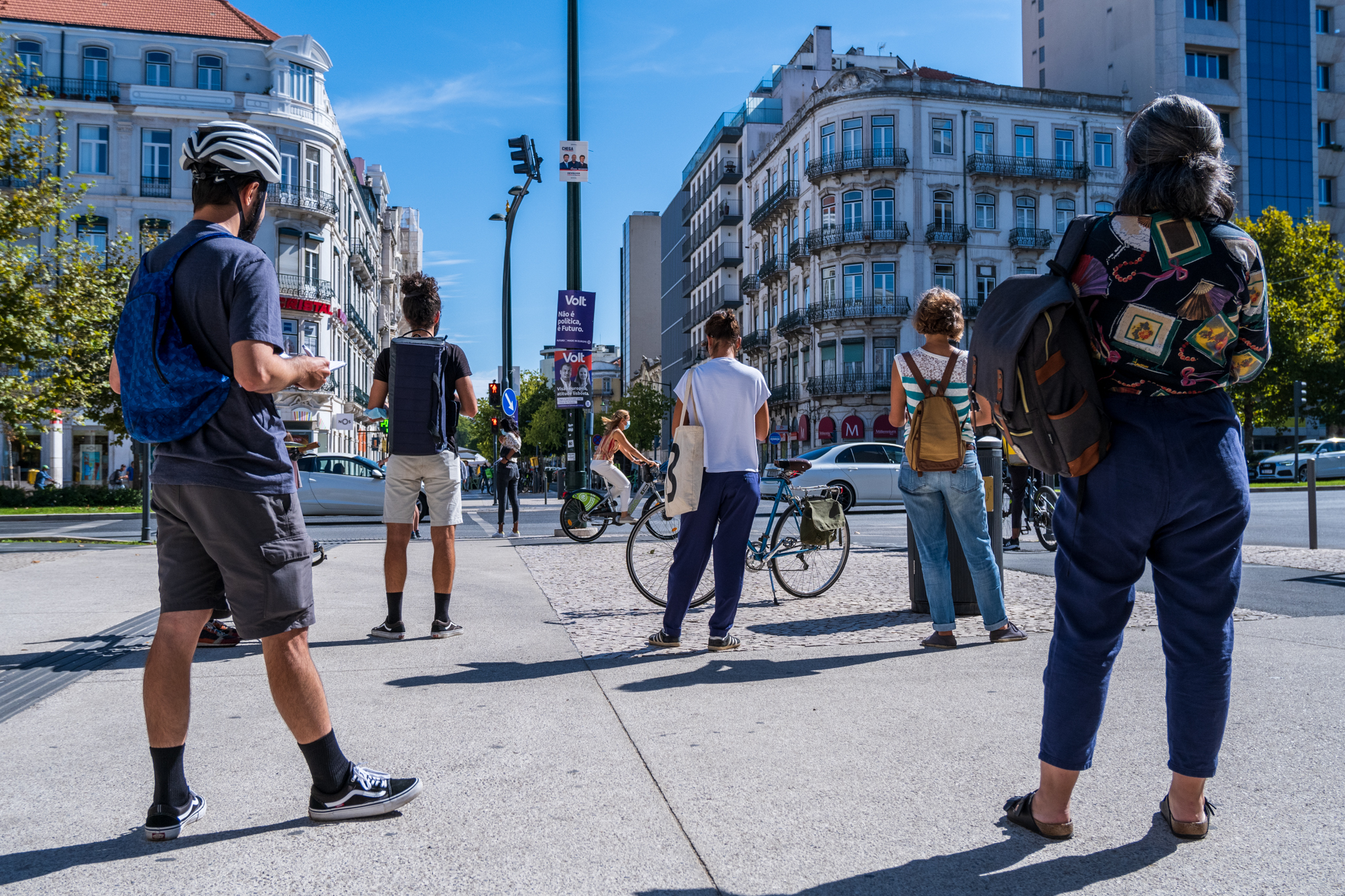
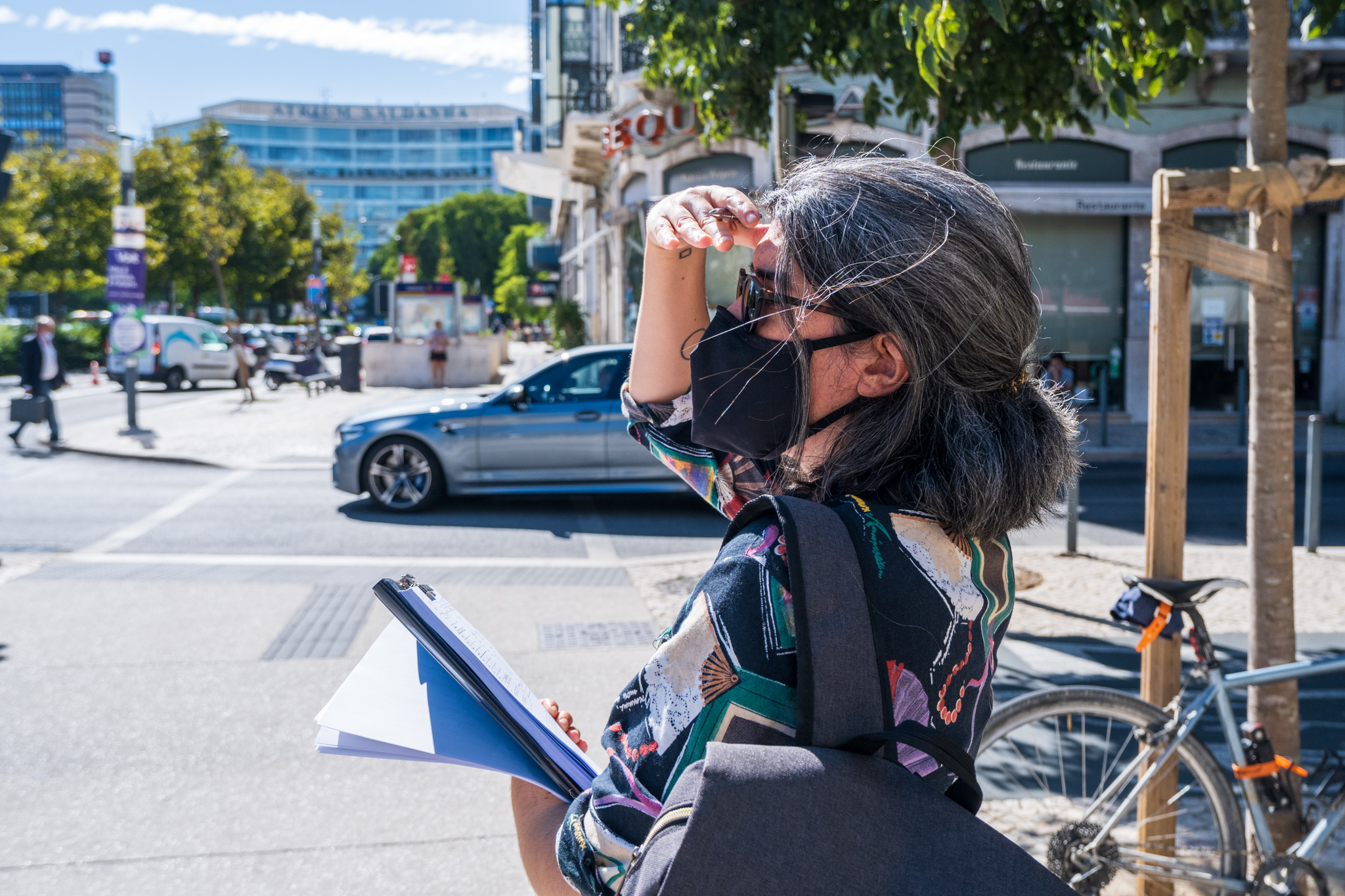
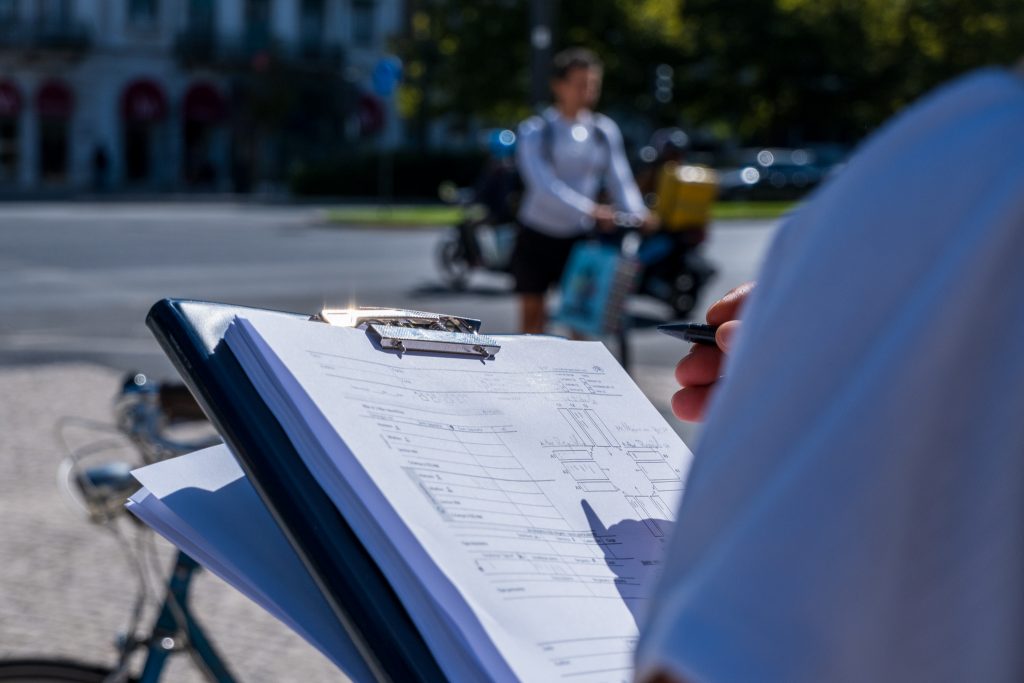
Back at the crossroads, Nuno and Maria exchange some small talk, for the practice of previous years in the counts already allows them this multitasking. "The worst thing that can happen is you run into friends. I've had friends walk by me and I didn't even call them out."says Maria. It takes concentration, after all. "The guys are concerned about the issue of rigor. We're not messing around here. It's really important to be aware of the flows, meaning that you memorize where the cyclist who's standing there came from and see where he's going after the green light opens." As a duo, Nuno and Maria manage to divide tasks: she keeps an eye on the flows, he on people's profiles.
"Yesterday I was dying out there all by myself"Nuno, who was in a spot at the Saldanha traffic circle, says. "We communicate with Rosa and she will reinforce the teams when needed"Maria adds. "I think it's more annoying if you're accounting for a place where not a lot of people are passing by, but then you also throw in some phones and a podcast." For Maria, this work of counting has also allowed her to discover other dynamics in the city. In spite of being "used to riding a bike every day"The places where it passes - Penha de França, Almirante de Reis, Graça - represent a different reality, for example, this intersection between Avenida da República and Duque d'Ávila. "I have found that a lot more people are using their bicycle for work from the corporate environment, which is something that in day-to-day life I didn't realize as much. I've also gained a sense of how many people use shared bikes."

